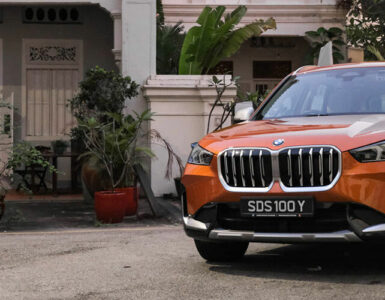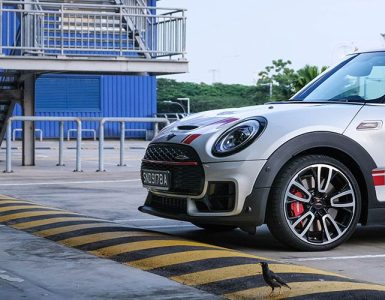I remember the first time I saw a Polestar 2 on the road as its distinctive rear light-blade traced the car’s journey across the expressway to the exit. I wondered how it might feel to drive one as more electric vehicles (EVs) began to appear on our streets, thanks in part to Tesla making a big splash here last year.
Where EVs were concerned, I had only driven the MINI Cooper SE, a small car with a relatively small range – not exactly the specifications one hopes will be directly proportionate to each other. With about 200 km on a full charge in real-world driving, you could add range anxiety to the ownership experience if you didn’t have convenient access to a charging station. So when the Polestar 2 came with a range of about 350 km on a 90% charge (that’s what Polestar recommends as the maximum charge in order to optimise the battery’s longevity), I was hopeful.
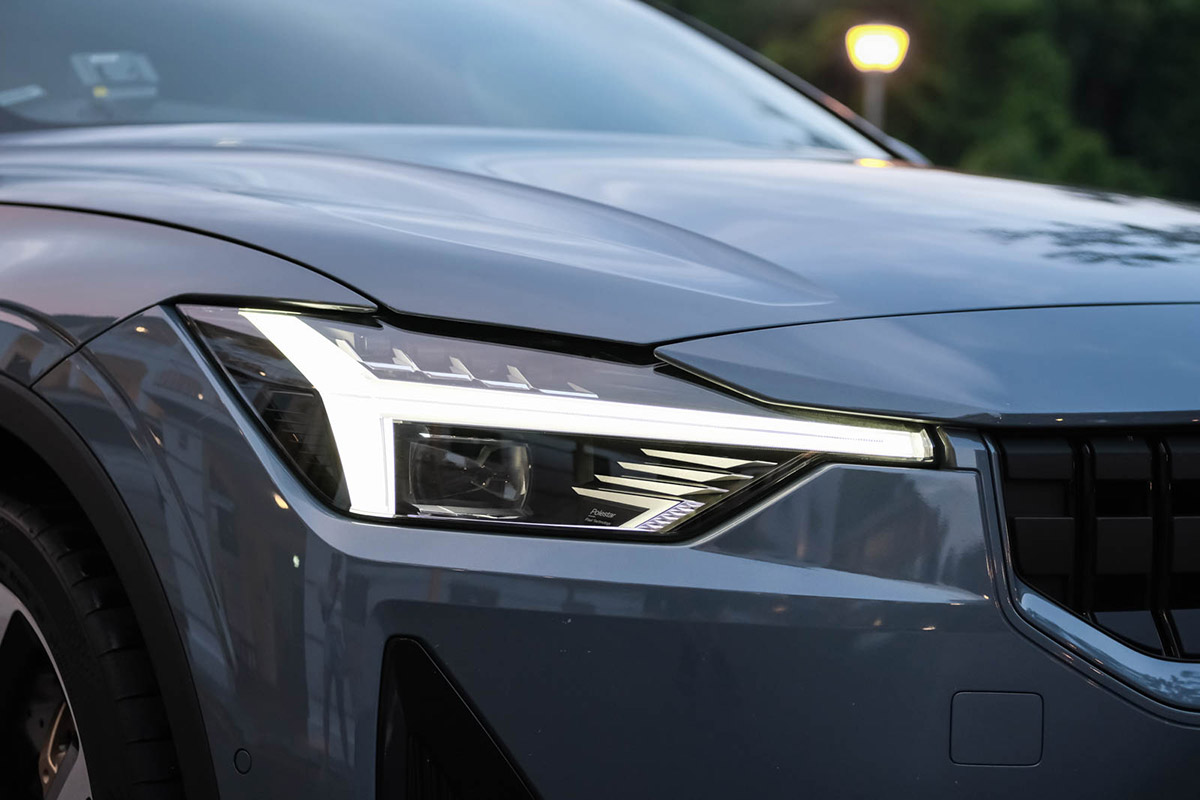
But first, its design. The geometries in the front give the Polestar 2 a commanding presence. Painted in a bluish-grey that Polestar calls Thunder, the car’s boxy appearance is most obvious at the rear with a high boot lid and seems in stark contrast to other car manufacturers’ preference for svelte shapes and flowing lines. Instead of placing contrasting Polestar badges on the car, the designers went with body-colour implementations, confidently letting the fastback’s sharp lines, distinctive LED light designs and silhouette be its identifying features.
There are obvious design elements from parent company Volvo, such as the Thor’s hammer daytime running lights in front, as well as the minimalist automotive aesthetic that we’ve come to expect from the Scandinavians. This minimalism is perhaps taken to the most extreme in the design of the side mirrors, which are practically frameless and look years ahead of our time – Polestar claims this has allowed them to reduce the mirror unit’s overall volume by 30% and improve the car’s aerodynamics.
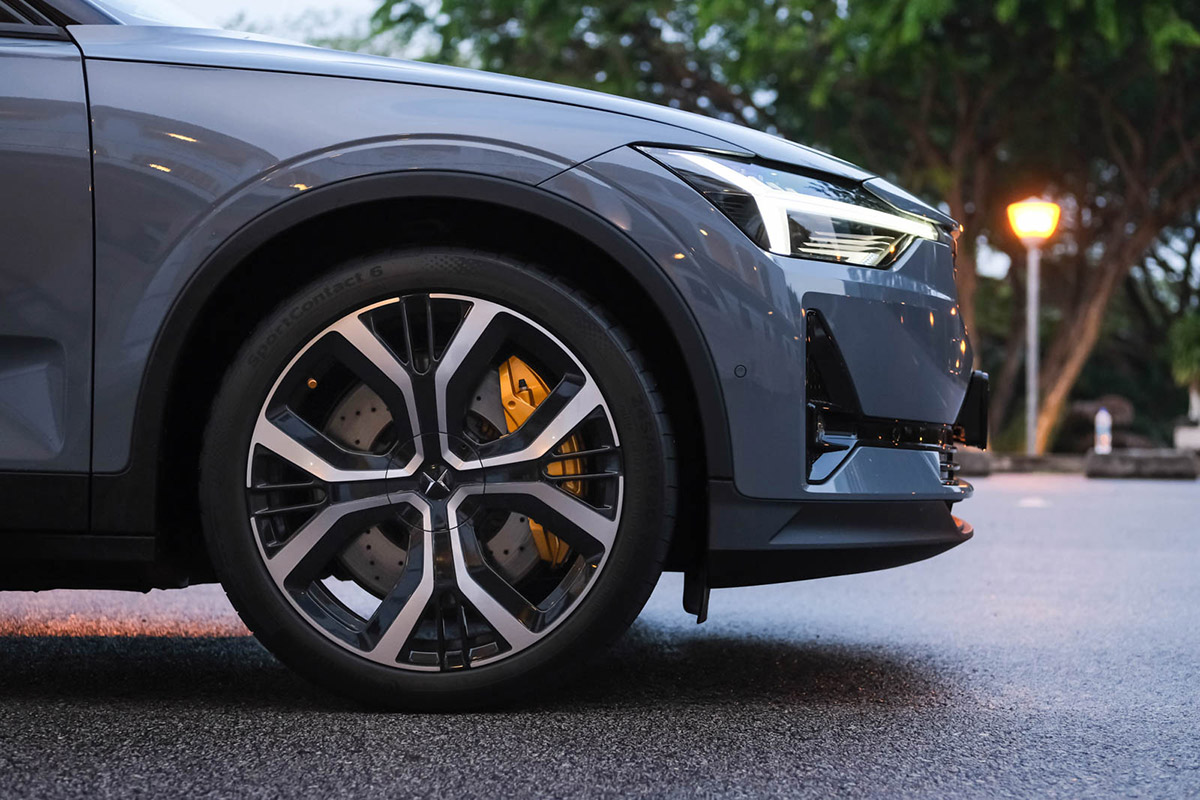
The minimalism feels progressive and purposeful, but is interrupted by the inclusion of the Performance Pack, a $16,000 option. For that money, the Polestar 2 comes equipped with high-performance Brembo brakes, Öhlins Dual Flow Valve dampers with 22 adjustable suspension settings, 20-inch forged alloy wheels, special edition seatbelts and valve caps – both in a bright gold colour – adding performance and personality to the fastback.


When climbing inside, my first realisation was how much taller the hip point was in the Polestar 2, thanks to the batteries beneath. Reassuringly, however, comfort and luxury hadn’t been sacrificed for Polestar’s minimalist approach to design and material selection. The upholstery uses a textile called WeaveTech that features a high composition of recycled materials, is significantly lighter than leather, 100% vegan, pretty durable and cleans easily – proof that it’s possible to be sustainable and elegant at the same time.
The panoramic roof, which is made of tinted and laminated glass, creates a feeling of spaciousness and adds to the luxury from within. Despite the roof being transparent, the interior never felt warm on a sunny day; and on a couple of drives in the rain, the cabin remained relatively quiet.
The custom Harman Kardon audio system in the Polestar 2 is a fine acoustic setup. The 13 speakers–consisting of specialised bass drivers, high-frequency tweeters and an air-ventilated subwoofer under the bonnet–work harmoniously to handle a wide variety of music genres with admirable precision. Even to my untrained ears, the bass sounded crisp and tight, whether on Welshly Arms’ Legendary or Jailbreak by AWOLNATION.


Geeks out there would probably be at least intrigued, if not excited, to know that the Polestar 2 is the world’s first car with a built-in Android-powered operating system. It’s also possible to download additional apps from the Google Play Store directly to the car.
I liked that the user interface on the large central touchscreen was clean, responsive and intuitive; the matte surface retained visual clarity while preventing the tablet display from becoming a fingerprint magnet. The downside to this is that the air vents on the centre console are positioned behind the top of the touchscreen and point upwards instead of at the front occupants, although the fastback’s climate control system and insulated cabin worked well to keep temperatures cool even on warm days.
I could use voice commands to operate Google Assistant and perform hands-free adjustments of the car’s climate control system, or get directions on Google Maps. With Google Automotive Services, the navigation system would provide directions to my destination while accurately predicting the remaining battery level I could expect to have on arrival. Very useful, especially for drivers who often worry about the range of their EV.

On the subject of range, this press car is the Long Range Dual Motor (LRDM) variant, which packs a larger-capacity 78 kWh battery that gives it a more generous range; its two motors produce 300 kW–which is 408 hp in old money–and double the torque of its humbler siblings at 660 Nm delivered through the all-wheel drive system.
But the Polestar 2’s power delivery is gentle and linear at the low end – the ease of moderating the acceleration at low speeds reminded me of a conventional car, which made the first few moments of driving it out of the Polestar Space a less nervy affair. Once I found a bit of clear road ahead of me, I mashed the right pedal into the carpet to satisfy my curiosity and was not disappointed: the familiar shove of unadulterated acceleration in an EV only needed a committed right foot to complete the 0-100 km/h sprint in 4.7 seconds.
The Polestar 2’s one-pedal driving feature allowed me to alternate between Low and Standard in different environments to see how strong the effect of the regenerative braking was. I left it in Low most of the time – with enough of a distance between myself and the car ahead, I had little need for the formidable Brembo brakes to slow the car down on the highway or in the city.
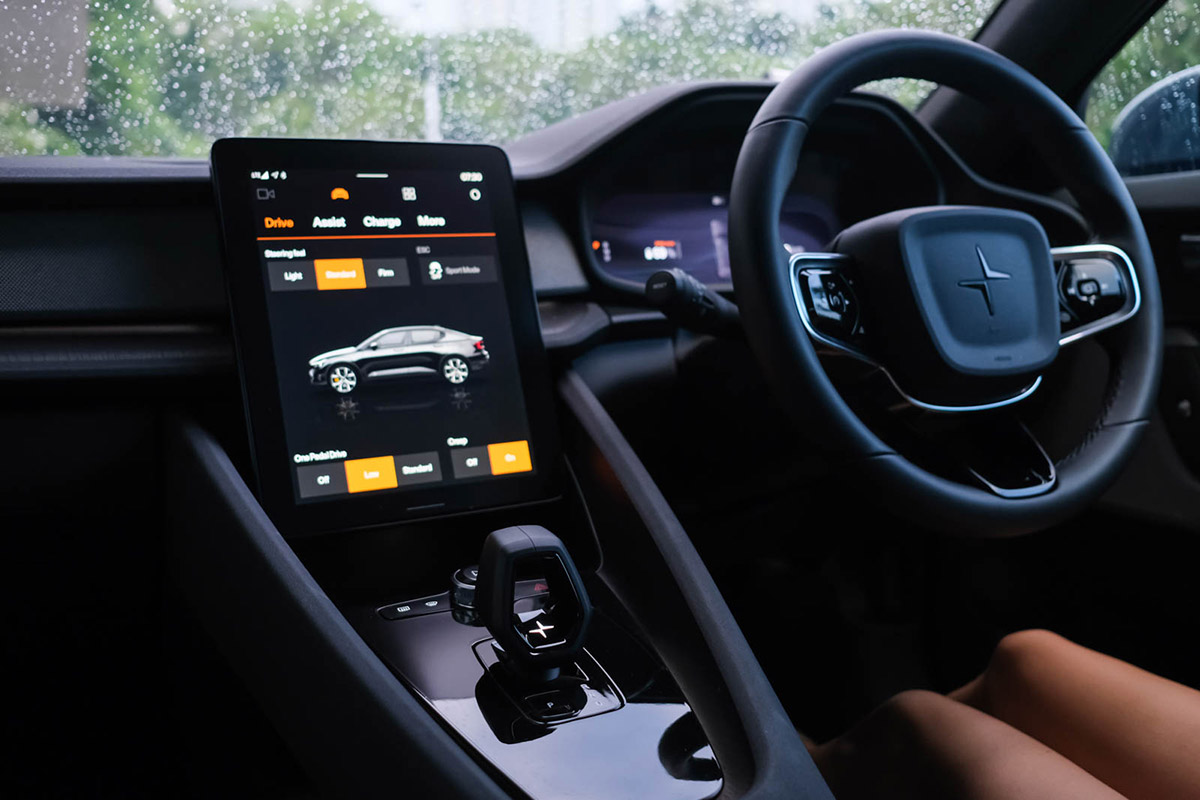
While I didn’t have a hair-raising moment during my drive, it’s reassuring to know that when the accelerator in the Polestar 2 is released quickly, the brake pads are moved closer to the brake discs to shorten the reaction time. And if the brakes are applied suddenly, the system will anticipate the need for an emergency stop and provide additional assistance (if the brake pedal isn’t pressed hard enough) by automatically applying full braking power.
Large wheels and low-profile UUHP tyres are often a recipe for a harsh ride. Attaching them to sports suspension and dampers aren’t meant to help with ride comfort, but it could do worse than be fitted with the 245/40R20 Continental SportContact 6 developed for the Polestar 2 with the Performance Pack. The ride was firm but not uncomfortable even on the roughest of roads, and although the car’s 2,113 kg kerb weight is hard to ignore when it leans in the middle of a fast sweeping turn, the Polestar 2’s low centre of gravity and electric powertrain keep the car agile and exciting. It may not change direction the quickest, but it’s responsive enough to convince that switching to EVs doesn’t mean having to be resigned to joyless journeys.
Having covered a respectable distance over a weekend in the Polestar 2 and reduced its battery charge to 30%, it seemed like a good time to recharge the car while I had dinner. SP had partnered with Polestar and sponsored some charging credits for my review, and given it has the largest public EV charging network in Singapore (more than 480 charging points at over 100 locations ranging from shopping malls, entertainment venues and hotels to industrial and commercial buildings) at the moment, I easily found an available charging station on SP’s smartphone app. Although it was my first time using the app to recharge an EV, the process was familiar: open the charge port cover, remove the charging station connector from the dock and insert it into the car’s charge port, and scan the QR code on the charging station using the app. Once the charging process began, I went about my activities – a pop-up notification appeared when the car was done charging to 90% (the preset limit for optimal battery longevity) with a reminder to move the car from the charging lot in 30 minutes.
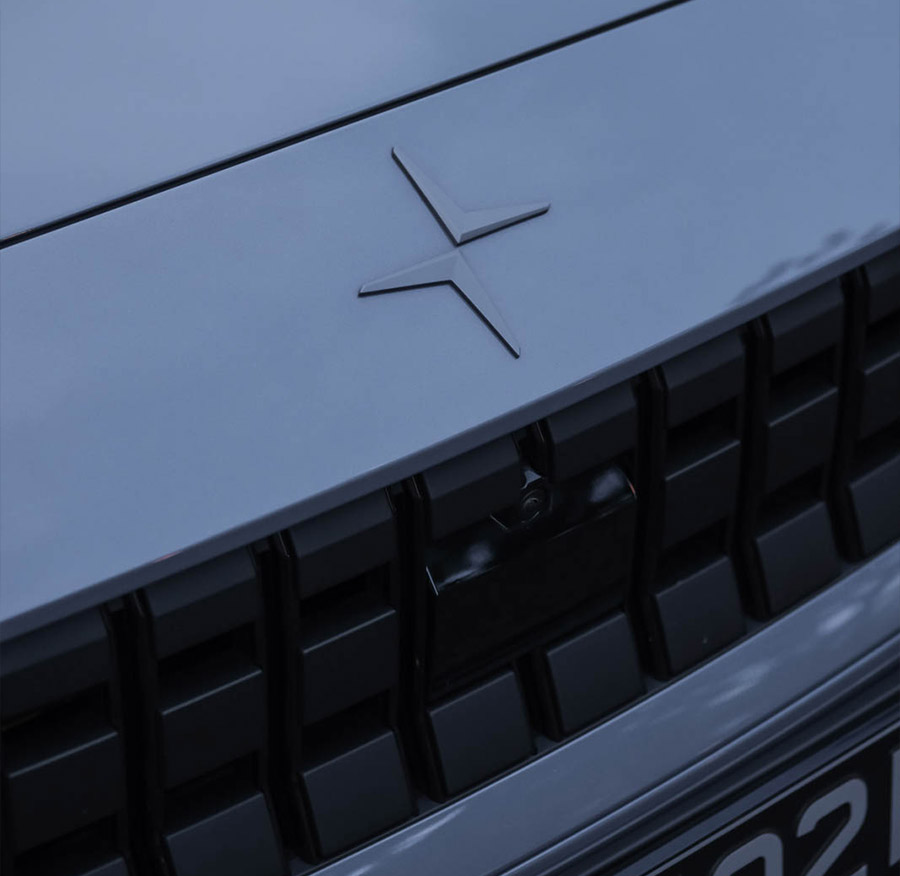
It wasn’t too long ago that Steve Jobs popularised the term “post-PC” and today, Polestar’s website uses the term “post-petrol car enthusiast” in identifying who the Polestar 2 LRDM is for. It’s hard to disagree with that. In some ways, the Polestar 2 represents a car that’s built for the future: it’s committed to sustainability not just in the propulsion technology of its vehicles but the selection and sourcing of materials for its manufacturing; and while its Android-powered operating system may not be fully matured yet, its ability to receive OTA updates mean it’s ready for what lies ahead. And if that means more cars like the Polestar 2, then there’s much for petrol-car enthusiasts like myself to be excited about in an electric future for automobiles.
Special thanks to Polestar Singapore for this opportunity.
The original version of this article can be read at Eat.Fly.Drive.
GEEK REVIEW SCORE
Summary
The Polestar 2 Long Range Dual Motor (LRDM) is aimed at the post-petrol car enthusiast, but can it deliver on its electric promise?
Overall
8.2/10-
Handling - 8/10
8/10
-
Performance - 9/10
9/10
-
Design - 9/10
9/10
-
Comfort - 8/10
8/10
-
Practicality - 8/10
8/10
-
Value - 7/10
7/10
Alex eats a lot, travels a little, and drives cars that aren’t his on eat.fly.drive.




